Five Practices to Prevent a Legionella Outbreak and Control Waterborne Pathogens
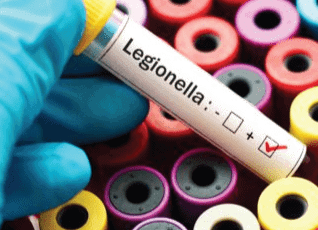
The Centers for Disease Control and Prevention (CDC) has reported between 8,000 and 18,000 cases of Legionnaires’ disease annually in the United States caused by the spread of the Legionella bacteria. How can you protect your facility from Legionella and other waterborne pathogens? Here are five practices that you can implement to prevent bacterial outbreaks in your building’s water system and protect your patients, guests, and facility. 1. Evaluate sustainability Choose a systemic, long-term solution for your facility that is environmentally friendly, cost-effective, easy to maintain, and focuses on preventing the growth and spread of Legionella and other waterborne pathogens. Prioritize methods that provide residual protection while requiring little personnel maintenance and monitoring and avoid scale, corrosion, and biofilm growth. 2. Consider your environment Consider a plan that has no detrimental effects on the immediate plumbing environment and the individuals it serves, such as the patient, guests, and employees. You will need to evaluate where waterborne pathogens thrive. Most have a presence and are amplified in non-circulating loops, stored water systems, and water biofilms, and they tend to increase in hot-water environments. Pathogens are transmitted through aerosolization, ingestion, and contact. Knowing these facts, identify areas or devices in your building where Legionella or other waterborne pathogens might grow to prevent and eliminate colonization. 3. Avoid hazards Many water disinfection methods create other hazardous conditions in the long term. Avoid practices that require hazardous handling, storage, or continuous monitoring. Protect yourself from carcinogens and other harmful health effects caused by conventional disinfection methods. Choose a non-corrosive solution that does not damage the distribution system and is effective throughout the entire water system. 4. Select vetted technologies Select a Legionella prevention method with a proven track record, EPA registered, NSF approved, and ETL/UL certified. LiquiTech’s copper-silver ionization technology is certified by the agencies. Our filters have been extensively evaluated by relevant microbiological test protocols in independent laboratories and have passed all rigorous third-party tests to ensure complete compliance. 5. Develop a water management program Developing and maintaining an effective water management program is a process that requires review and proactivity. Follow these six steps to creating an effective water management plan:
Strategies For Protecting Your Hospital From Legionella Growth
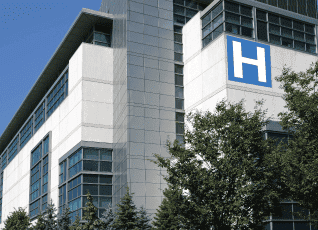
Legionnaires’ disease, a deadly but preventable form of pneumonia, is a risk in healthcare facilities across the country. The Legionella bacterium causes this infection and is found naturally in fresh, warm water sources. However, it can increase in the plumbing of large buildings such as hospitals. For this to happen, Legionella must first grow and then spread through tiny, contaminated water droplets that people can inhale as a mist, steam, or vapor. Legionella is dangerous because it can sometimes go undetected and can contaminate medical equipment. Patients breathe in airborne mist from contaminated water droplets which could lead to an outbreak of Legionnaires’ disease. It is important to note that most healthy people who are exposed to Legionella bacteria don’t go on to develop the disease. Individuals who have compromised immune systems are more vulnerable to the illness. Symptoms of the ailment include fever, chills, fatigue, muscle aches, and more. The first recorded case of a Legionnaires’ disease outbreak was in 1976 at the American Legion convention in Philadelphia. More than 180 individuals who attended the convention got sick with a form of pneumonia, and 29 of them died. Soon after this event, the bacterium was discovered and acquired its name: Legionella. But how can you protect your healthcare facility from Legionella growth? Legionella prevention measures Keeping the water supply in healthcare facilities safe is crucial to protecting patients, staff, and guests from contracting Legionnaires’ disease. Here are some ways facility managers can prevent Legionella bacterial growth in hospitals: Trust LiquiTech’s water management solutions Looking to eradicate waterborne pathogens from your building’s water system? LiquiTech can help. We serve many industries, including the healthcare sector. We strive to create healthier communities by improving water quality with our comprehensive water solutions. Our core products include copper-silver ionization, point-of-use filtration, point-of-entry filtration, and water management plans. We also provide risk assessments, testing and validation, remote monitoring, and flexible maintenance plans. Our advanced technology and EPA approval keep us ahead of other water management companies. When you turn to us for water treatment services, you’ll have peace of mind knowing that your patients, staff, and guests are protected from dangerous waterborne pathogens.
Biofilm: America’s Newest Water Safety Challenge
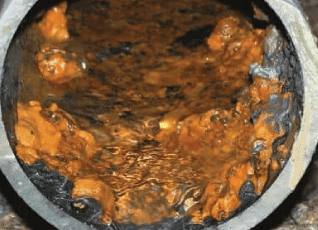
The United States has some of the safest drinking water in the world. But its water supply is facing a new challenge — a slimy growth inside pipes that is encouraging outbreaks of illness responsible for over 7 million illnesses and 6,000 deaths every year. That’s the disturbing finding of a new analysis of waterborne disease from the US Centers for Disease Control and Prevention that was 10 years in the making. “It’s not just about ingestion of water anymore,” said study coauthor Vince Hill, chief of the CDC’s waterborne disease prevention branch. “We captured a more modern picture of what waterborne disease looks like in the United States today.” Biofilm, a glue-like mixture of bacteria, fungi, amoebas, and other microorganisms, is taking up residence inside some of the 6 million miles of plumbing that support drinking, sanitation, hygiene, cooling, and heating systems in US buildings, according to the report published Wednesday in the journal Emerging Infectious Diseases. “If you’ve ever felt that slimy film on your teeth when you haven’t brushed in a while, that’s a biofilm,” said lead author Sarah Collier, an analytic epidemiologist at the CDC. “Biofilms tend to form anywhere there are microbes and water.” Robust biofilms can provide a safe haven for microbes, protecting them from disinfectants in the water, Hill said. That’s how potentially deadly waterborne pathogens such as Legionella bacteria (which causes Legionnaires’ disease) grow and escape into the air, sickening and killing thousands each year. In fact, the report found over 90% of all deaths and the majority of hospitalizations from waterborne diseases are caused by just three airborne pathogens that prosper in biofilms. “It’s sort of a paradigm shift for us: ‘Oh my gosh, there are things growing inside these pipes,’ whether it’s inside the water utilities system or inside your home,” Hill said. “So that’s kind of the new frontier that we’re recognizing,” Collier added. “And we think this is an area where we can help prevent disease.” Over 3 billion in healthcare costs The CDC team estimated total illnesses, visits to emergency rooms, hospitalizations, deaths, and direct health care costs for 17 waterborne infectious diseases that can be found in the home and industrial plumbing, hot tubs, recreational pools, and water parks. It was the first report to examine disease from all water sources (drinking, recreational and environmental) and all exposure routes (ingestion, contact, and inhalation), Hill said. The analysis found that over 7 million waterborne illnesses occur each year, resulting in over 600,000 annual visits to emergency rooms, 118,000 hospitalizations, and 6,630 deaths — totaling $3.33 billion in direct health care costs. Otitis externa, more commonly known as swimmer’s ear, was the most common ailment, accounting for 4.7 million or 65% of annual waterborne illnesses and 20% of hospitalizations. Norovirus infections, which cause vomiting and diarrhea, were the second most common, with 1.3 million cases, followed by the diarrheal disease giardiasis with just over 400,000 annual cases. While much less frequent, biofilm-associated pathogens were responsible for the highest number of hospitalizations and deaths, costing the US healthcare system $2.39 billion annually. Nontuberculous mycobacteria disease causes lung, skin, and soft tissue infections that can be difficult to control. Also called NTM, it was the most deadly of the three, causing 51,400 hospitalizations (44%) and 3,800 deaths (57%) a year. Direct health care costs in the US from NTM were $1.53 billion annually. Legionella bacteria, responsible for outbreaks of the pneumonia-type illness called Legionnaires’ disease and a mild flu-like illness called Pontiac fever, caused 995 deaths (15%) each year, the report found. Pseudomonas pneumonia was responsible for 15,500 hospitalizations and 730 deaths each year, costing the US $453 million annually. People would come in contact with these airborne diseases through shower heads, building cooling towers, and decorative outdoor fountains, among other sources, the report said. The CDC team also tracked illnesses caused by the parasite cryptosporidium and the salmonella, shigella, vibrio, campylobacter, and Shiga toxin-producing E. coli bacteria, which all typically cause stomach cramps and bloody diarrhea. Because cryptosporidium is “extremely chlorine resistant” and highly infectious at low doses, it has emerged as the major cause of outbreaks associated with treated aquatic venues, the report said. An infrastructure challenge Efforts In the United States to improve water safety are “recognized as one of the greatest public health achievements of the 20th century,” the report said. Outbreaks of diseases caused by feces-infested drinking water, including cholera and typhoid, were common in the 19th and early 20th centuries but are long gone. “In the past 40 years, we’ve seen a significant decrease in waterborne disease but the complexities have increased with more building plumbing issues and more recreational water issues,” said J. Alan Roberson, executive director of the Association of State Drinking Water Administrators, who was not involved in the study. At the same time, funding has stayed flat or decreased for research, infrastructure, regulations, and the ability to increase compliance with the existing regulations, both at the federal and state levels, Roberson said. Then there is the issue of aging pipes and the challenges of private wells or unregulated water systems that serve an estimated 43 million persons. “Drinking water from the treatment plant to your water meter is really heavily regulated and a lot of work is put into making sure that it’s safe,” Collier said. “Once it’s in your house or in a building, however, it’s on the individual homeowner or the building owner to make sure it’s safe. “Consumers can do their part, Roberson said, by understanding their home plumbing system starting with where the water comes into their home, the materials that make up the plumbing, and how the water is distributed throughout the house. “While it’s not part of this report, the country has around 6 million lead service lines and the ownership of those service lines are typically split between the water system and the property owner,” Roberson said. “So removal of all of those lines is another public health initiative that’s going to require a collaborative effort across a large number of communities.” Steps to take
Top Water Quality Challenges That Healthcare Facilities Face

Because of their particular role in our communities, healthcare facilities face unique challenges in water quality that are not sufficiently addressed at the municipal water treatment level. Waterborne pathogens within healthcare settings where patients are already vulnerable to infection are particularly problematic. To protect patients and healthcare workers from pathogens such as Legionella, pseudomonas, mycobacteria, and klebsiella, LiquiTech has developed an advanced multi-barrier water treatment technology to eradicate these risks. Mitigating healthcare-associated infections The Centers for Disease Control and Prevention reports an annual rate of 1.7 million healthcare-associated infections (HAI). This means many people contract additional illnesses within hospitals and other healthcare settings. Almost 99,000 of those patients die because of an HAI. These infections often directly result from faulty water treatment systems within healthcare facilities. How Legionella spreads Legionella bacteria can thrive in the pipes of large water systems common within healthcare facilities. These bacteria thrive on biofilms that grow inside the pipes. Humans are then exposed to the bacteria through showers, sinks, and hot water baths that patients and healthcare workers may use to receive or provide care. When people inhale the aerosolized water particles from the steam or mist of these water sources, they can contract pneumonia-like disease. UV disinfection LiquiTech provides multifaceted water treatment solutions for healthcare facilities that remove Legionella and other waterborne pathogens from the water system. This drastically improves patient safety and healthcare outcomes while simultaneously protecting healthcare workers. Ultraviolet (UV) water disinfection: This non-chemical, broad-spectrum disinfection system creates intense wavelengths of UV light. If the water passing through the system contains Legionella, the UV light completely damages the DNA and RNA of the microorganisms so that they lose the ability to reproduce. If the bacteria cannot reproduce, it cannot spread. Not only does this deactivate Legionella, but viruses, molds, yeasts, and other types of bacteria. Copper-silver ionization The final barrier is copper-silver ionization, which kills the bacteria by damaging its ability to absorb nutrients. The copper and silver ions form electrostatic bonds with the bacteria’s cellular walls so they can’t latch to and draw nutrients from biofilms within the pipes. Hospitals and other healthcare facilities are under enormous strain daily, and expenses can be daunting. Hospitals cannot afford to ignore point-of-use water treatment any longer, not when so many lives are on the line. LiquiTech water treatment for healthcare facilities LiquiTech’s pioneering technology solves healthcare facility water quality challenges to save lives today. By focusing on water quality — the source of so many environmentally acquired infections such as Legionella in healthcare settings — we elevate the ability of our clients to provide the lifesaving care they constantly strive for. Contact us today to learn more.
Controlling Legionella Using Copper Silver Ionization
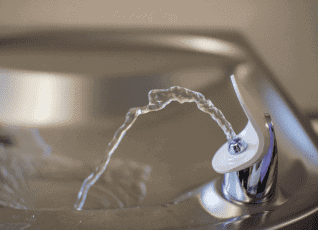
Hospitals and healthcare facilities need to do everything possible to prevent contagious diseases from spreading. One of the most critical ways they can do this is by providing water that has been treated to kill harmful pathogens such as bacteria and viruses. However, there are other environments in which clean water is an absolute necessity. Hotels, commercial properties, and other buildings where many people congregate are at risk for the growth and proliferation of disease-causing contaminants such as Legionella, the bacteria responsible for Legionnaire’s disease. Controlling Legionella and other infectious intruders should be a high priority, no matter what type of property you own. In the past, owners and managers were limited in their options, often forced to turn to chlorination and the use of other chemicals to control the levels of Legionella in their water supplies. Not only is this difficult to manage, but it can also lead to its own health risks if not adequately monitored. This is why many facility managers have turned to a more successful alternative: copper-silver ionization. What is copper-silver ionization? This process involves distributing ions into a building’s plumbing to kill any pathogens that may be present. The ions produced by the LiquiTech ionization process are cationic, surface-active, and a potent biocide. The treatment action is attributable to the positively charged copper and silver ions forming electrostatic bonds with negatively charged sites on microorganism cell walls. These electrostatic bonds create stresses that lead to distorted cell wall permeability, disrupting the intake of life-sustaining nutrients and ultimately leading to cell lysis. Bacteria are killed rather than merely suppressed, as with alternative Legionella treatment methods. The accurate dose-rate control system maintains precise ion levels, providing residual protection and prevention of recontamination. What are the benefits of this process? Compared to methods that depend on chemicals, copper-silver ionization offers several advantages. These include: LiquiTech: The experts in copper-silver ionization As the recognized leader in the application of this technology, LiquiTech is your go-to source for copper silver ionization, as well as many other services related to battling waterborne pathogens. To learn more about what we can do for your facilities, get in touch with us today.
Top Five Long-Term Benefits of Copper-Silver Ionization
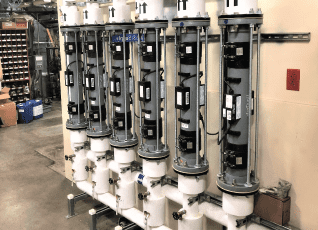
Copper-silver ionization gives you the ease of knowing that your water system is completely purified and protected with minimal maintenance. Compared to other disinfection methods like hyperchlorination, thermal eradication, ozone disinfection, and ultraviolet radiation, copper-silver ionization is safer, more effective, lasts longer, and is more reliable. Here are five long-term benefits of utilizing copper-silver ionization over other disinfection methods. 1. No harmful by-products, eco-friendly, and safe Copper-silver ionization is the safest and most eco-friendly solution for supplemental water treatment. Other methods, like hyperchlorination, work by injecting high doses of chlorine into the water supply to kill bacteria. According to research, approximately 70 percent of chlorine dioxide degrades in hot water, meaning extremely high concentrations of chlorine are required to sustain efficacy. Maintaining such a high concentration is challenging and creates by-products that are proven carcinogenic. During copper-silver ionization, tiny doses of copper and silver are added to the water supply, thereby preventing harmful products, carcinogenic risks, and adverse health-related side effects. 2. Minimal maintenance for your team Unlike hyperchlorination, copper-silver ionization does not require continuous dosing. Other disinfecting methods like thermal eradication are time-consuming, tedious, and labor-intensive because numerous personnel monitors distal sites, water tank temperatures, and flushing times are required to prevent bacterial recolonization in the water system. Copper-silver ionization is easy to install and requires minimal monitoring and maintenance, and depending on your service agreement, our team could do all the work for you. 3. Residual protection Research shows that residual protection lasts up to two months after a copper-silver system is turned off – the ions continue to recirculate in the plumbing environment providing residual protection from bacteria. Comparatively, hyperchlorination is only effective in short periods as bacterial recolonization often occurs simply as the disinfectant levels decrease. Likewise, ozone disinfection and ultraviolet radiation do not provide residual protection and may require a secondary disinfectant. A safety buffer is created to prevent contamination during copper-silver ionization, even if the system is off. 4. No corrosive effects Most chemical solutions are proven to be corrosive to your plumbing infrastructure in the long term, causing pinhole leaks and other costly issues that require equipment replacements. Ozone disinfection imposes a high voltage, which may damage the lids and pumps in a system. A common misconception about copper-silver ionization is that copper ions have corrosive effects. This is not the case. Copper-silver ionization keeps the plumbing intact to ensure the longevity of your plumbing infrastructure. 5. Better for your budget Copper-silver ionization has low consumable costs compared to other conventional disinfection methods. In hyperchlorination, long-term disinfection leads to high costs from corrosion. Like thermal eradication, long-term use can become logistically tedious due to increasing energy costs for maintaining higher hot-water temperatures. Other technologies or alternatives come with consumable and regular maintenance costs in addition to the upfront investment of the system. Copper-silver ionization is the most cost-effective approach. It quickly pays for itself by eliminating the need to spend additional dollars on sanitizers, clarifiers, maintenance, monitoring, and personnel training.
What is Sediment and What Impact Does it Have on Plumbing?
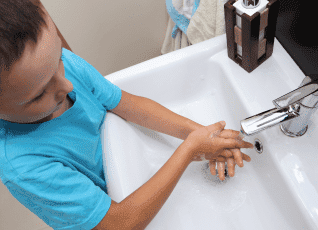
Sediment wreaks havoc on a building’s plumbing system. Damage to piping and equipment can be costly, and sediment creates an environment where bacteria thrive, and bacteria-reducing solutions must work harder. The primary sediment source in building piping systems does not come from within the building, and the primary source is the municipal water supply. Sediment is already in the water before entering a building. Because of this, it can easily be missed or ignored. This is why we call sediment the invisible enemy. Why is sediment so prevalent? The US plumbing infrastructure is falling apart, and it is old and failing. There are more than 240,000 water main breaks per year. The domino effect The trip water takes from the municipality to the building starts a domino effect. The municipality typically injects chlorine or another chemical disinfectant into the water system. Chlorine is shown to cause corrosion, and as the water travels to the facility, three activities take place: When the water reaches the building, the water quality is often poor, the disinfectant residual is low, and the disinfectant efficacy is decreased. Sediment levels have also increased. What are the adverse effects of sediment? Sediment introduces Total Suspended Solids (TSS) to a building’s water system. TSS (TSS) is the dry weight of suspended particles not dissolved in a sample of water that can be trapped by a filter that is analyzed using a filtration apparatus. It is a water quality parameter used to assess the quality of a specimen of any water or water body. It is listed as a conventional pollutant in the U.S. Clean Water Act. Reduction in residual disinfection: Providing a food source for bacteria: Shielding bacteria from disinfection: Cost of increased equipment and infrastructure damage How do you combat sediment and its negative effects? Point-of-entry filtration can significantly reduce sediment coming into the building from the municipal water supply. There are numerous filters on the market. However, they vary in efficacy and have various advantages and disadvantages. Traditional filters include bags, cartridges, and sand. There are several concerns and disadvantages with conventional filters, including: Positive results from reducing sediment There are filters on the market with newer technologies, such as LiquiTech™ Sediment Filtration System, that deliver a much higher efficacy with no negative consequences or shortcomings. The filtration system can remove the food source by reducing surface area and eliminating corrosion particulates. The technology reduces sediment and allows secondary disinfectants to perform at the highest efficacy while collecting predictive data. When a facility chooses to remove sediment proactively, it improves the piping system and equipment in numerous ways, including: Full-spectrum protection The domino effect illustrates the importance of proactively reducing sediment and bacteria at point-of-entry. It shows how conditions in specific plumbing piping locations affect the entire plumbing system loop. A multi-barrier approach is the most effective way to protect the system at any site. Sediment filtration to combat sediment when combined with Ultraviolet Disinfection to address cold-water side bacteria and Copper Silver Ionization to obtain non-detect Legionella levels provides a facility with the broadest spectrum approach for eliminating Legionella, waterborne pathogens, and waterborne HAIs.
ASHRAE 12-2020 Guideline

The new guideline 12 version takes a much closer look at how to manage the risk of Legionellosis. Over the years, the challenge has changed from minimizing Legionellosis to managing Legionellosis and reducing to stopping cases. It is important to note that the new standard implies that getting a test showing positivity isn’t necessarily negative. This should help the “head in the sand” syndrome that many in the industry still abide by. The “if I don’t know I have a problem, then I don’t have a problem.” We all know that we should be proactive in stopping cases of Legionellosis, and the only way we know if we are doing a good job and need to adjust our current strategy is to test. The new Guideline 12 “gives us permission” and says, “this is okay.” The new version is written to be more easily adopted into code. However, this doesn’t mean it will be. It takes several years for new regulations to be adopted by various governing bodies. The guideline details disinfection methods and the numerous risk factors within the plumbing system that affect your plan’s efficacy to minimize Legionellosis. It considers that water quality, sediment, and biofilm can decrease the effectiveness of certain disinfectants. The guideline notes and calls attention to the fact that biofilm and sediment can wreak havoc on a plumbing system and reduce the efficacy of disinfectants and higher water temperatures. The new version deemphasizes thermal shock and calls out its negative aspects. Temperature efficacy can be highly volatile due to changes in water quality. It should be noted that the standard industry temperature chart is based on laboratory testing, not real-world testing that takes into consideration fluctuating water quality, biofilm, and sediment. Guideline 12 identifies water quality risk factors, including sediment, disinfectant residual, temperature, and water age. It speaks on the adverse effects uninsulated or under-insulated pipes, dead legs, long pipe runs, cold pipes near hot sources, biofilm, debris, sediment, and water age can have on disinfectant efficacy. The only disinfectant not affected by these risk factors is copper-silver ionization. The guideline notes the possibility of municipalities adding a disinfectant to the water supply and that disinfectant residuals decrease as water travels to and through a building. Municipality disinfectant treatments are usually not high enough to adequately reduce Legionella within a building’s plumbing system. The municipality disinfectant is also volatile. The municipality can change the level, and they often do not let you know if it has been changed. The disinfectant level can also be affected by weather conditions and water main breaks. In section five, the guideline recognizes electronic, or sensor faucets have become very popular because of water conservation efforts. However, they can reduce flow and therefore deliver stagnant water. The guideline points out the need for cross-connection and backflow prevention, especially with outlets that might not be as notable, such as mop sinks. Another item to remember is other equipment that can provide nutrients for bacteria—particularly carbon filters. There was no mention of thermal and chemical shock in the 2018 version, which is likely to have been included in the latest version due to COVID-19 and buildings closed with dormant piping systems. While thermal and chemical shock can have immediate effects in times of emergency, they are only helpful at one point. Their effects decrease very quickly, and recolonization can happen very quickly. Both thermal and chemical shocks also potentially cause significant corrosion and other damage to plumbing systems and equipment. Takeaways Install a filter to reduce sediment. LiquiTech’s Safe T Gard filters do not deplete disinfectant residuals as other filters can do. Utilize copper-silver ionization for potable water remedial treatment because of its long-term effectiveness. Utilize copper-silver ionization as a permanent disinfectant because it is not affected by the risk factors ASHRAE 12-2020 identifies, it does not cause corrosion; there is no scalding risk and no threat to humans. The new guideline noted a more comprehensive temperature range for optimal Legionella growth. Copper silver’s efficacy is not affected by temperature. The guideline emphasized that a positive Legionella test isn’t necessarily bad, and testing should be done regularly as a preventative and proactive approach to reducing the risk of Legionella. Create a flushing protocol if you don’t already have one.
Legionnaires’ Disease Cases Soar Again, Set New Record

America’s deadliest waterborne disease is becoming more pronounced. The number of reported cases of legionellosis, an umbrella term for two illnesses caused by Legionella bacteria, climbed by 33 percent last year, to 9,933 cases, according to data released this week by the Centers for Disease Control and Prevention. The number of reported cases in 2017 was 7,458. The milder of the two ailments caused by the bacteria is Pontiac fever, which is akin to the flu. The vast majority of the cases, however, are Legionnaires’ disease, a severe respiratory illness that resembles pneumonia and kills about one in 11 people it infects. The illnesses, which are not contagious, are spread by inhaling mist contaminated with the bacteria. Rooftop cooling towers, hot tubs, showers, and ornamental fountains are among the sources of water vapor linked to disease transmission. Just over half of the cases occurred in only eight states in the mid-Atlantic and Great Lakes, regions that have the highest rates of infection in the country. Those states are Illinois, Indiana, Michigan, New Jersey, New York, Ohio, Pennsylvania, and Wisconsin. Ohio reported twice the number of cases as California (930 to 453), even though Ohio’s population is roughly a quarter that of California. Nationwide, there were three reported cases per 100,000 people, which is more than six times higher than the reported rate in the early 2000s. The CDC releases official annual disease counts roughly 10 months after the end of the year. As for the number of infections, legionellosis now ranks above tuberculosis and just behind hepatitis A. Hepatitis A cases are also soaring, due in part to drug use, more people experiencing homelessness, and associated unsanitary conditions. Health researchers say there is no single explanation for the steady rise of a disease that was first identified four decades ago and spreads at the intersection of the built and natural environments. A risk factor is age, and the American population is getting older, with the median age having increased by nearly 10 years since 1970. People older than 50, smokers, and those with weakened immune systems have a higher risk for the disease. The nation’s water delivery systems are also aging, and the bacteria can take root in the biofilms that lodge in corroded sections of pipe. Water main breaks, a consequence of older infrastructure, may introduce unwanted bacteria into pipes. A changing climate is another factor. Studies have shown that infections spike following warm, wet periods. Late summer, in general, is the peak season for Legionnaires’ disease. In some cases, building management and design may be to blame. Water and energy efficiency measures, desirable in their own right for resource conservation, can be detrimental when it comes to Legionella control. Energy conservation measures may put water temperatures within buildings in the range that is most suitable for bacteria growth. Water conservation means more stagnant water in oversized pipes. Better diagnostics and more watchful doctors are other factors. Legionnaires’ disease is widely assumed to be underreported, undiagnosed, or mistaken for pneumonia. An expert committee convened by the National Academies of Sciences, Engineering, and Medicine estimated that the true number of Legionnaires’ disease cases in the United States each year is between 52,000 and 70,000. The higher estimate accounts for cases that are misdiagnosed as pneumonia or not reported. Though 2019 data is still incomplete, it has already been a record-breaking year. Georgia registered the largest Legionnaires’ disease outbreak in its history this summer, as did North Carolina, where 142 people were sickened at the Mountain State Fair. Four people died in that outbreak, which was linked to a hot tub display at an exhibition hall.
As Legionnaires’ Disease Cases Surge, Lawsuits Pile Up
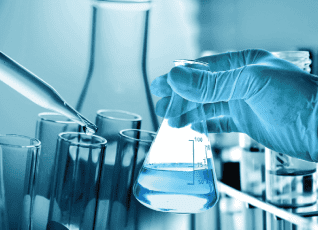
By Brett Walton, Circle of Blue Elliot Olsen has been litigating Legionnaires’ disease cases for a dozen years and he’s never been as busy as today. “I’ve got more lawsuits going now than I ever have,” said Olsen, a lawyer with Siegel Brill, a firm based in Minneapolis. Olsen, who represents people nationwide sickened with the pneumonia-like illness, said that Legionnaires’ cases account for about one-third of his current work load. There is plenty of work to go around. The number of people who fall ill with Legionnaires’ disease in the United States is soaring, up 33 percent in 2018 compared to the previous year, according to data released this week by the Centers for Disease Control and Prevention. The disease, which is not contagious, is caused by inhaling water droplets that are contaminated with Legionella bacteria. It frequently sends people to the hospital, and it kills about one in 11 people infected. In tandem with the rising disease burden is a corresponding increase in the number of lawsuits, according to lawyers involved in these cases. Most legal actions are civil lawsuits against building owners or their maintenance contractors for negligence or failure to protect guests on their property, a personal injury claim akin to a slip-and-fall case, lawyers say. But criminal charges against Michigan health officials in the wake of 12 deaths in Flint linked to Legionnaires’ disease awakened the public health community to the legal risks of inaction against a disease that was first identified four decades ago but has grown in prominence only in the last few years. The involuntary manslaughter charges were dropped this summer by the Michigan Attorney General’s Office, but the shock has not worn off. In light of the flurry of litigation, observers wonder whether legal liability will prompt changes in building management and oversight practices that are not yet mandated by law. Few jurisdictions in the country have any rules for preventing the spread of the bacteria that proliferate in building water systems. New York, for instance, regulates cooling towers, a common source of bacteria transmission, and the federal government has ordered hospitals and nursing homes that receive Medicare payments to inspect and test their water systems. Beyond that, regulations are scarce for America’s deadliest waterborne disease. “Generally speaking, this is one area where the potential for liability can drive self-regulation,” Lance Gable, an associate professor at Wayne State University Law School who studies public health law, told Circle of Blue. “Litigation sometimes gets out ahead of regulations imposed by government. The threat of litigation can drive behavior, and drive behavior in the absence of regulation.” Civil Cases Dominate the Courts Examples abound of legal actions that stem from alleged mismanagement of building water systems. Last month, a man who contracted Legionnaires’ disease at the Mountain State Fair, in western North Carolina, sued the vendors whose hot tubs are suspected as the transmission source. The hot tubs were on display at an exhibition hall at the Western North Carolina Agricultural Center. In September, the family of a woman who died from Legionnaires’ disease after staying at the Watkins Glen Harbor Hotel, in the Finger Lakes region of New York, sued the company that owns the hotel for alleged negligence in building maintenance. And in August, a woman sued the Rush Oak Park Hospital, located in the Chicago suburbs, alleging the hospital was negligent and failed to warn patients about the bacteria. For Olsen, these alleged failures are a familiar refrain. He sees the same mistakes repeatedly in his cases: building managers are ignoring their water systems. “What I see most, in terms of a water management plan, is nothing — they have no water management plan in place,” said Olsen, who has been working on Legionnaires’ disease lawsuits for about 12 years. “So they have no strategy whatsoever to protect their building from being colonized by Legionella. That’s the most common thing I’ve seen.” Olsen tries to prove that whoever is in charge of the building’s water supply, either the owner or a contractor, did not adequately maintain the system to prevent Legionella growth. The bacteria are present in lakes and rivers, but they multiply to the point where they become a health risk in warm, stagnant water — water that can be found inside building plumbing. Health department officials investigate outbreaks, which are two or more cases linked to the same source. Those inquiries can be a boon to people filing a lawsuit if the health department investigation turns up solid evidence that connects the bacteria at the source to the bacteria that sickened individuals. If there is no direct link to a bacteria source, having a water management plan in place that adheres to one of the industry standards is a good defense for a building owner in the event that someone gets sick, according to Russell Nassof, founder of the health risk consulting firm RiskNomics. Environmental investigations for Legionnaires’ disease are complex and a “smoking gun” link between source of transmission and patient is hard to trace, Nassof said. Evidence that a building is checking its chlorine levels and water temperatures and periodically flushing its pipes is firm ground to stand on. “If you have potential exposure points out there, different exposure points, and you have one, for example, with good documentation and a water management plan that has been maintaining their building pristinely, then in all likelihood you would start to look at other sources for potential liability,” Nassof told Circle of Blue. Tom Bernier, a partner at Goldberg Segalla, is a defense lawyer in Legionnaires’ cases. Typical clients include building owners and maintenance contractors, but he has recently seen liability lawsuits extend to general contractors, architects, plumbing engineering people, and contractors that put in potable water systems. When constructing a defense for his clients, Bernier seeks to call doubt on the direct link between building and plaintiff. Are there other potential sources of exposure? Is the bacteria of the same genetic type in both the building and the sick person? Could the person’s ailments be